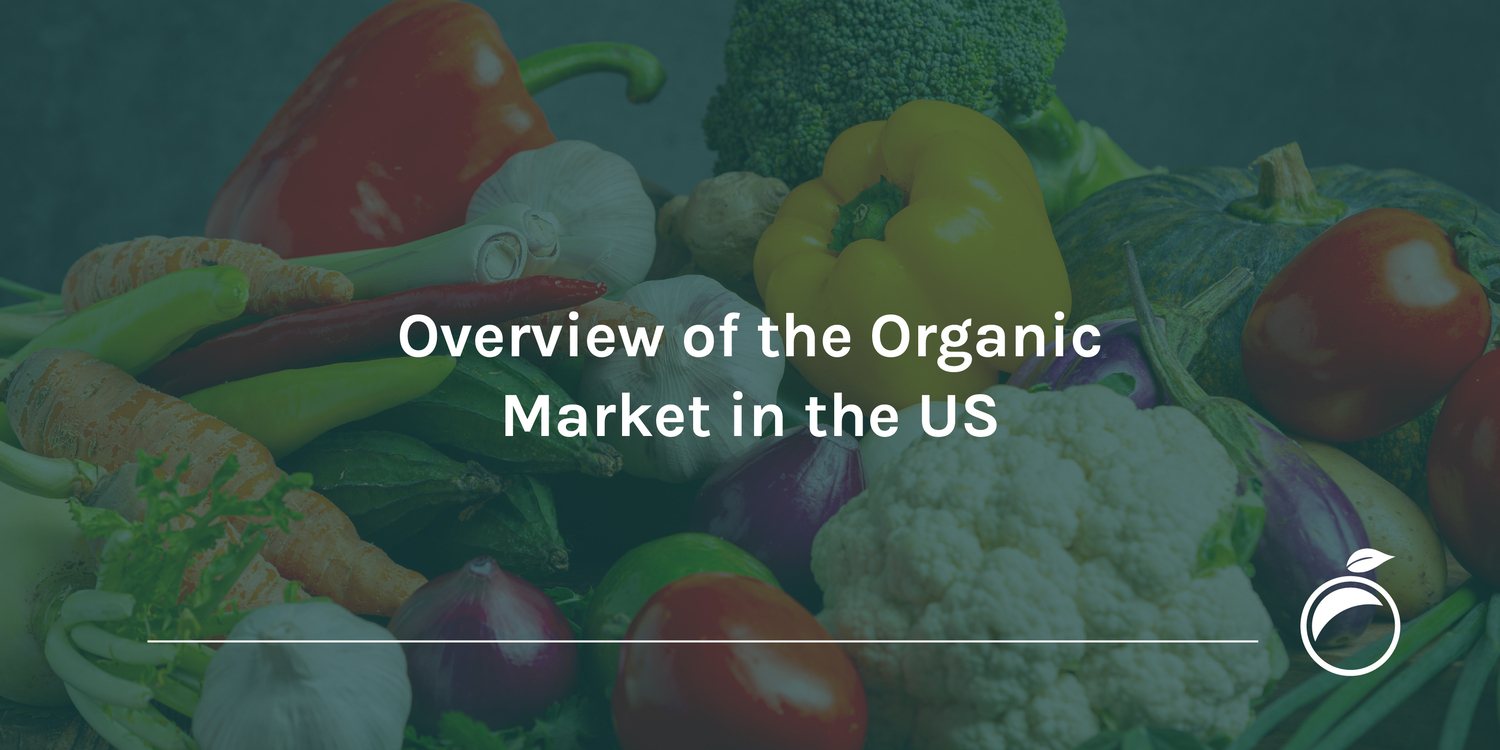
Overview of the Organic Market in the US
The National Organic Program (NOP) of the U.S. Department of Agriculture’s Agricultural Marketing Service (USDA-AMS), establishes the international organic import and export policies that aim to facilitate trade in organic products and expand opportunities for certified organic farms and businesses around the world.
What is the demand for organic products in the United States?
The consumption of organic products has become popular among U.S. consumers, who are increasingly choosing to eat organic foods because of their various health benefits.
The pandemic has been a major factor in the increase of these consumption, as during 2020, sales of organic products in the United States grew by 14.2%, which represented an increase of $1 billion, reaching a value of $8.5 billion, according to a report by Organic Produce Network and Category Partners.
It is estimated that about 4% of total U.S. food sales are organic products. Organic foods are sold to consumers primarily through three main venues: conventional grocery stores (93%), natural food stores, and direct-to-consumer markets (7%).
In recent years, this demand for organic products in the United States has grown enormously, having that, in 2021, organic food sales were $57.5 billion, a growth of 2% over 2020. Likewise, this has led to the U.S. importing more organic products.
Organic produce sales are led by fruits and vegetables, which accounted for 15% of the total organic produce market with a value of more than $21 billion in 2021, an increase of approximately 4.5% over 2020.
U.S. organic produce supply
In 2021, domestic production contributed 2,035 million pounds of organic products (fruits, vegetables and herbs), to which 1,684 million pounds of imported products were added, having a total supply of 3,719 million pounds. Of this volume, 44 million pounds were exported, leaving availability for U.S. consumers at 3,675 million pounds.
Regarding domestic production, the main produce were apples (31.1%), strawberries (9.5%), oranges (6.9%), romaine lettuce (6.7%), and potatoes (6.2%). In the case of trade, the most imported produce were bananas (53.1%), avocados (7.7%), mangoes (5.8%), blueberries (5.0%) and squash (4.3%), while the most exported were apples (80.0%), pears (14.4%), cherries (4.0%), dried onions (1.5%) and potatoes (0.2%).
On the other hand, the organic products with the highest supply (production plus imports) in 2021 were: bananas (24.1%), apples (18.8%), strawberries (5.6%), blueberries (4.0%), oranges (3.8%), romaine lettuce (3.6%), potatoes (3.6%), avocados (3.5%), celery (3.3%) and pears (2.8%).
How to export organic products to the United States?
According to the USDA, the United States can allow the importation of organic products only under two circumstances: 1) when the organic product comes from a USDA certified farm or business or 2) when the organic product comes from one of these countries, with which the United States has organic trade agreements: Canada, European Union, Japan, South Korea, and Switzerland.
To obtain a USDA organic certification, the following procedure must be followed:
- The farm or business must adopt USDA-endorsed organic practices such as using USDA-approved pesticides and fertilizers, using natural methods for weed removal, among other things.
- Seek a USDA-accredited certifying agent.
- The agent makes the site visit and inspects the operation.
- If the result is positive, the certifying agent may issue the organic certificate.
Also, there are specific organic import requirements that vary depending on each country with which the United States has an agreement; you can review these requirements here.
In addition to the organic requirements, general import requirements or product-specific requirements must also be complied, which cover aspects related to labeling, import codes, grades and standards (USDA-AMS), guidelines in the Code of Federal Regulations (CFR) and sanitary inspection (USDA-APHIS).
Sources: Organic Trade Association, USDA-AMS, USDA-AMS, USDA-AMS, USDA-ERS and Letis

